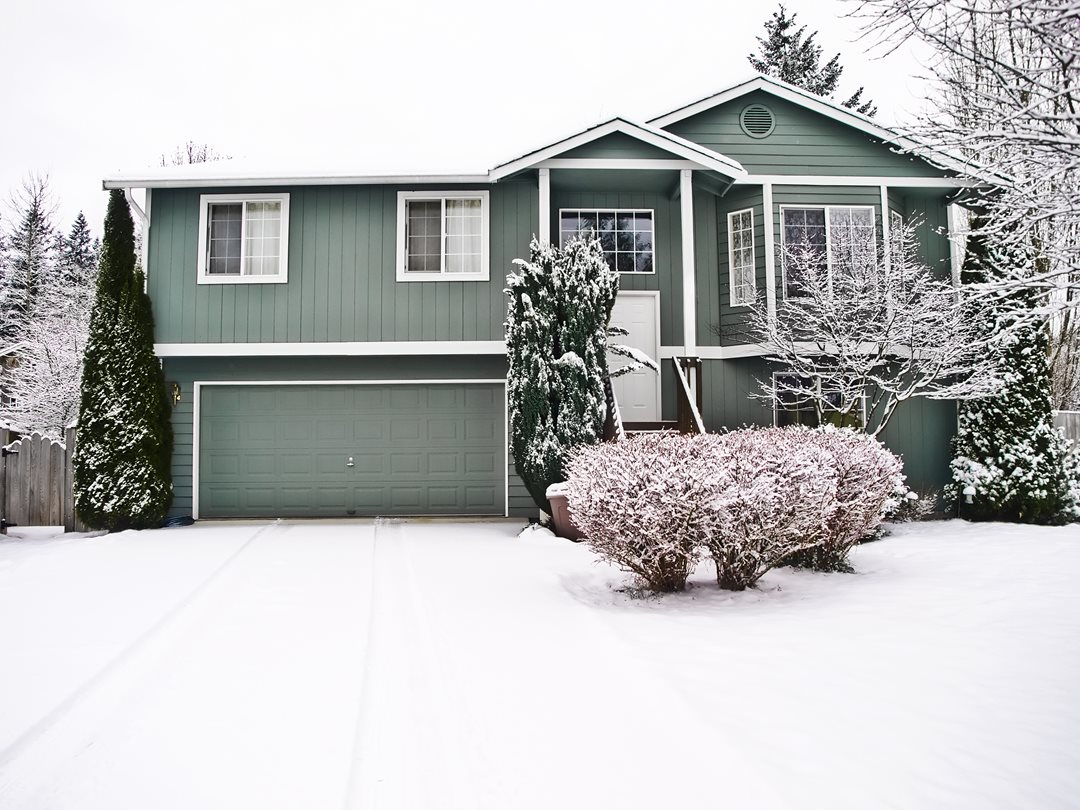Prevent ice-dam damage to your home in freezing weather
 It may only be November, but freezing weather is already upon some parts of the Pacific Northwest.
It may only be November, but freezing weather is already upon some parts of the Pacific Northwest.
While icicle-laden roofs may look beautiful, icicles often signal ice dams – a chronic problem in freezing weather, most often caused when snow melts in the warmer middle section of a roof only to refreeze at its colder, uninsulated edge. Blocked by a “dam” of ice along the roof’s edge and gutters, water can’t flow off the roof. When this happens, the water may back up, soak shingles and seep into wall cavities. Over time, this may cause decay in the framing, corrosion of metal fasteners, and peeling paint. Resulting humidity in the walls may cause mold and mildew to form. Bad news all around!
How to reduce your risk of ice dams
1. Ensure that your roof is evenly cold. Stop warm air from leaking into unheated attics by adding ceiling insulation to a depth of 12 inches (R-38) and caulking gaps from fan, wire, and plumbing installations. Ensure that the attic has good ventilation above that layer of insulation and the air just under the roof is the same temperature as the air just over it.
2. Keep gutters and downspouts clean so leaves and needles won’t prevent meltwater from flowing freely and being safely carried away by your downspout and drain system.
3. Monitor downspouts for ice buildup. Keep above-ground downspout openings clear of snow (salt sprinkled at the base of the downspout can help). If you think there’s an ice blockage inside (you hear a dull thump if you tap on the downspout), you can warm the outside with hot water or, if it’s safe to do so, pour it in from the gutter that drains to it.
4. Install electric cable deicers to warm your overhangs, provided you have a non-combustible roof. Unplug them when the weather warms to avoid a high energy bill.
5. When it's time ot re-roof, add a rubber membrane under the lower section of shingles to provide a second line of defense for homes with low-pitch roofs or other design features prone to ice dams.
If you already have an ice dam
Use extreme caution when trying to remedy ice dams. Shoveling snow off a slick roof can be hazardous. Also, your roof may be brittle when cold and easily damaged by chipping and scraping.
A safer solution: Create channels for snowmelt to run off by pouring hot water from second-story windows onto roof sections below. Though some homeowners give them mixed reviews, calcium chloride ice-melting blocks may also help -- and you can toss them onto your roof while you stand safely on the ground. This solution should only be used for actual ice dams, however, since some roofers contend that compounds in these blocks can corrode roofing nails, gutters and roof flashing if used regularly.
Get help
If you have solar panels mounted on your roof, or your home has a history of ice dams, we recommend professional roof shoveling services, which you’ll want to arrange early since those companies book up quickly once snow begins to fall.
Share on social media